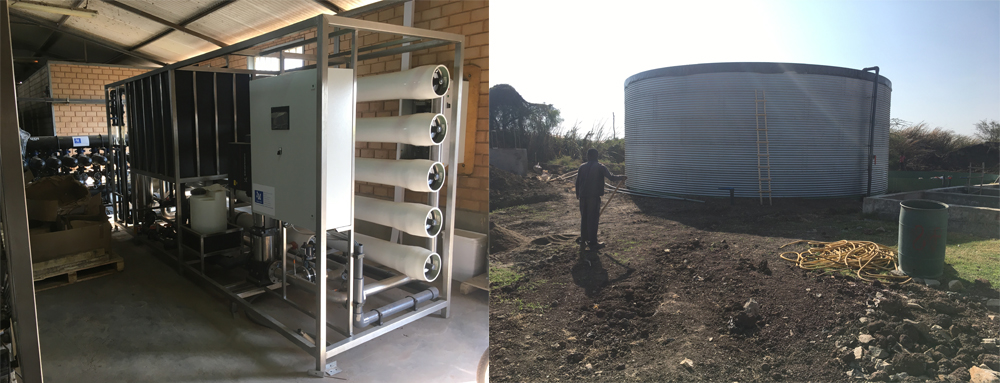Sustainable water management, Ethiopia
Our production location in Koka, Ethiopia has invested heavily in a number of water management solutions. With more cooling capacity, extra storage capacity and a new irrigation system, we can switch to maximum use of natural hot water sources and minimal use of river water. In addition, we reduce our water consumption and heat the greenhouses without burning fossil resources. Florensis Ethiopia PLC extracts 50% of the irrigation water from the Awash river and 50% from hot springs. In addition, we use the hot water sources for heating our greenhouses during cold nights between October and March, which means that we do not have to burn fossil resources. The river water is disinfected with a UV installation and the spring water (for irrigation) is treated with a Reversed Osmosis (RO) system.

To make our water use more sustainable and to exclude cultivation risks, we are currently investing in 3 improvements:
- Expansion (doubling) of the capacity of our Reversed Osmosis system and an increase of its efficiency
- 1000 m3 extra water storage (silos) for storing the return water from the greenhouse heating
- Expansion of cooling capacity to cool the spring water in the non-heating season
The inconstant quality of the river water poses risks for cultivation. With these investments we can switch to maximum use of source water and minimum use of river water. We also reduce our water consumption with this, as the hot spring water that we use for greenhouse heating was previously not reused. Now we have developed a system in which we convert this water, which is already cooled in the greenhouse, into irrigation water. This saves around 1000 m3 of water per day.
Based on our sustainability policy, we undertake initiatives aimed at 6 selected Sustainable Development Goals (Sustainable Development Goals, alias SDGs).The investments at Florensis Ethiopia enable us to manage natural resources more sustainably and use them efficiently (SDG 12 Responsible consumption and production). With the (re)use of the hot spring water we use sustainable energy source (SDG 13 Climate Action).

In 2020 we have inaugurated a constructed wetland as wastewater treatment for the salty waste water brine which is a byproduct of the reverse osmosis. In the different steps of the wetland excess salts are filtered out of the wastewater naturally by salt tolerant plants.